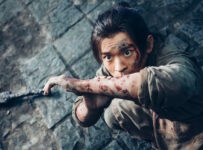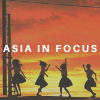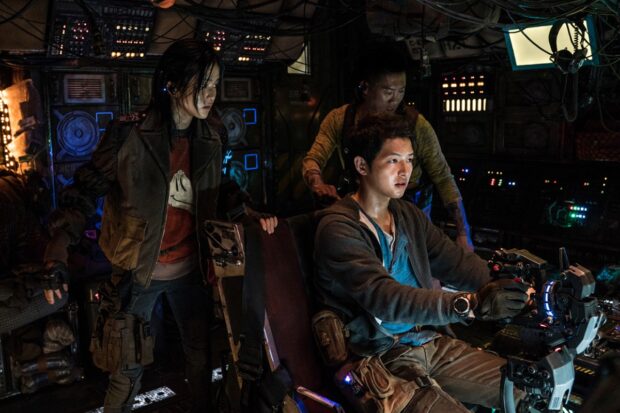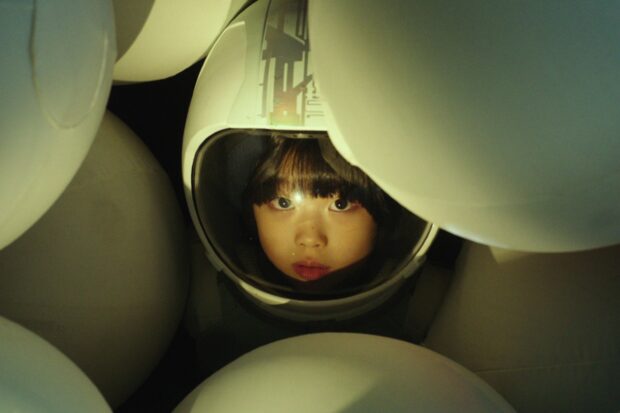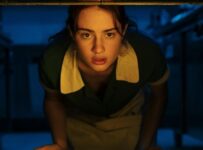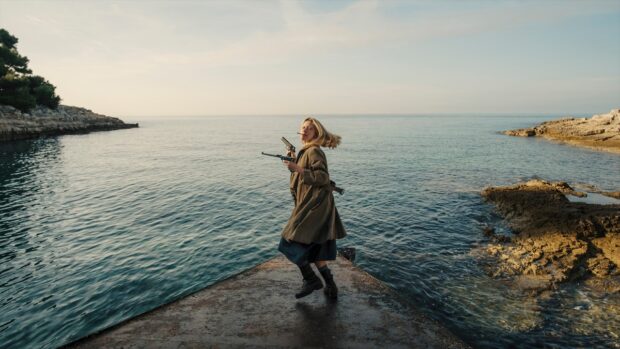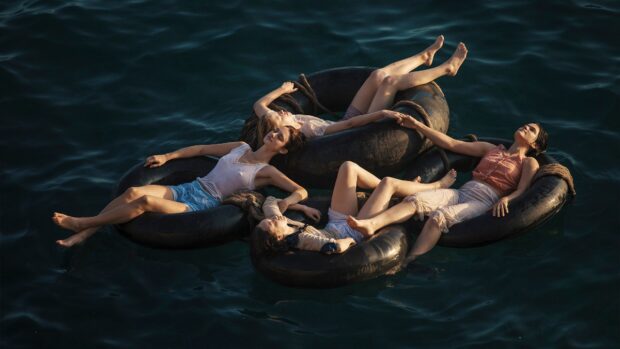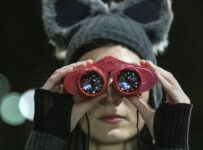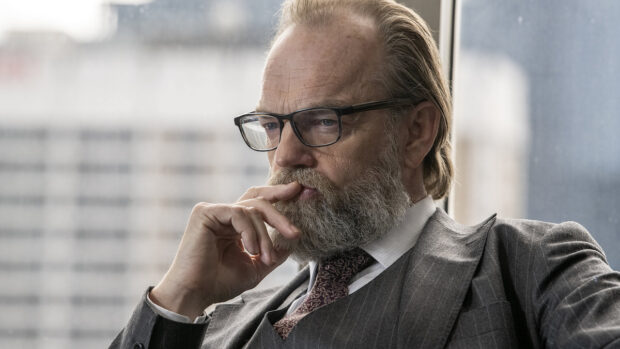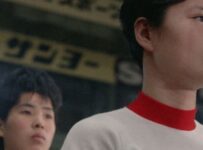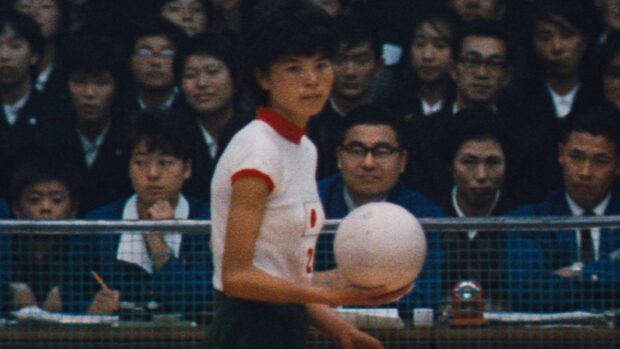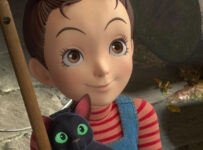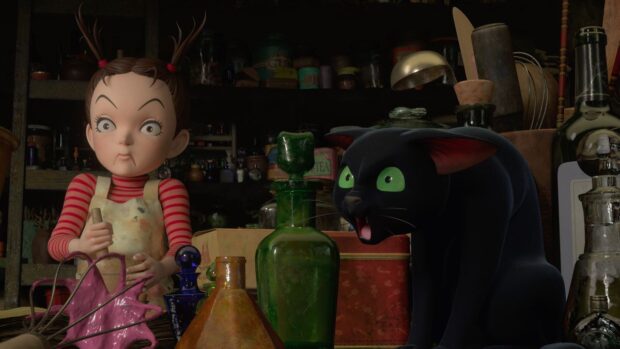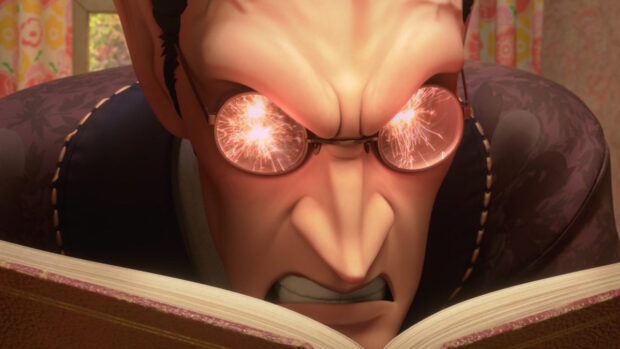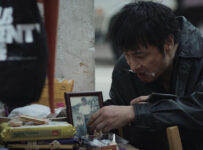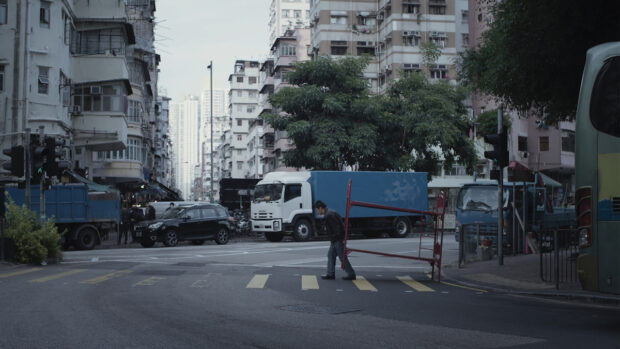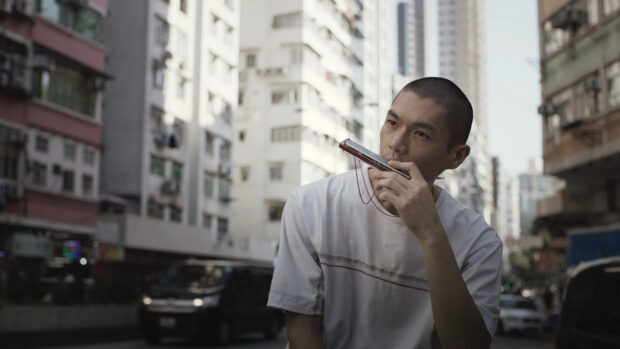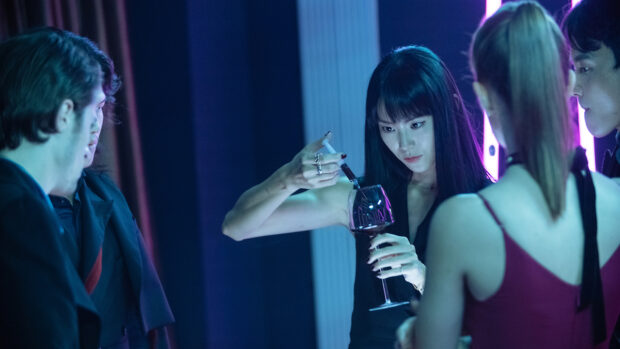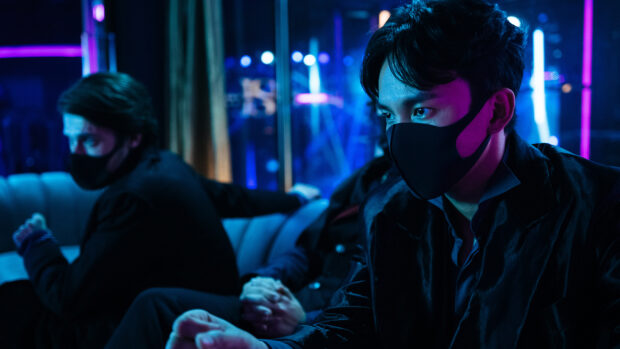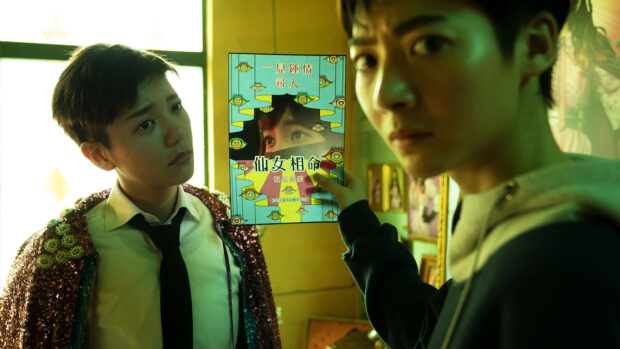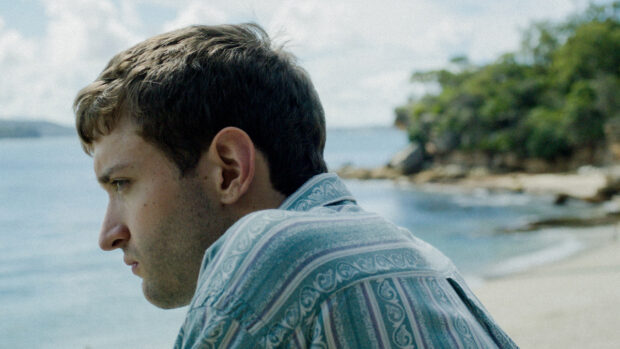Originally marketed as Assassin in Red, at least as recently as January this year, Lu Yang’s A WRITER’S ODYSSEY (刺杀小说家) confidently lands in cinemas as one of the Lunar New Year offerings for 2021. In the traditionally crowded season, this stands out for its unapologetic levels of crazy.
While there’s a lot going on in this film, the original Chinese title – which loosely translates to ‘assassinate the novelist’ – gets to the central layer of this tale. When we first meet Guan Ning (Lei Jiayin), he is a mysterious man desperately searching for his missing daughter, Tangerine. Given his ability to throw rocks and other small objects, he is hired by Tu Ling (Yang Mi) to assassinated a novelist (Dong Zijian).
Yet this is no ordinary writer. Yang Mi’s boss, a corporate giant of the fictional Aladdin Corp (which bears more than a passing resemblance to Alibaba), believes that the story he’s telling is killing him in real life. In the fantasy world of the story, a battle of good versus evil is being waged, and the worlds and characters begin to intersect and overlap. Guan Ning’s quest for his daughter leads him to some dark places in his world, but wonders if the novelist is the only one telling stories.
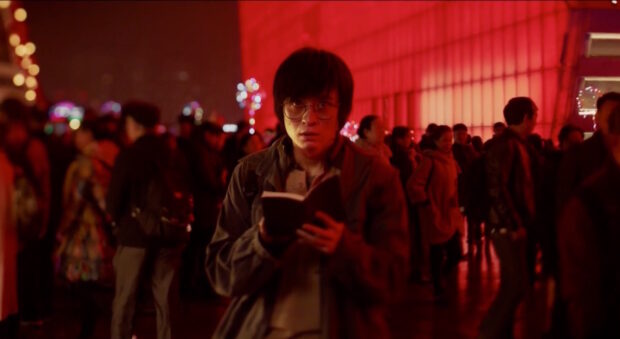
This layered special effects film is one of the more ambitious mainstream Chinese films we’ve seen in a while. Indeed, were it not for the large scale visual effects (if ever there was a film made for the big screen, it’s this), you’d think this was a throwback to the high concept actioners of the 80s or 90s. It’s not always clear what’s going on from minute-to-minute, but that hardly seems to matter when the storytelling is on a canvas this big.
The effects themselves are seriously impressive. Although somewhat reliant on computer generated imagery, Lu Yang – who is no stranger to period-inspired action with Sacrifice and the Brotherhood of Blades series – brings an inventive mix of high fantasy and slick modernity. There’s one stunning sequence where ornate floats and glowing hot air balloons form strings of dragons like an Orphean nightmare. Martial arts, swordplay, and armies of CG soldiers mix seamlessly with giant boss fights. It’s the kind of film where you almost want to rip the controller out of someone else’s hand and have a go.
Which would all be quite hollow if Lei Jiayin’s character didn’t ground the film. Recently seen in The Wandering Earth and My People, My Homeland, his angst when searching for Tangerine is tangible. Indeed, the parallel ‘real world’ story would make for a seriously dark thriller on its own accord, as Guan Ning nearly chokes out a gang member he suspects in involved.
All of this still takes a backseat to the spectacle, which is worth watching on as big a screen as you can manage during a pandemic. A fun and unashamedly batty giant, A WRITER’S ODYSSEY might just be the next Chinese franchise in the making.
2021 | China | DIRECTOR: Lu Yang | WRITERS: Chen Shu, Liu Xiaocao, Lu Yang | CAST: Jiayin Lei, Mi Yang, Zijian Dong, Hewei Yu, Jingfei Guo | DISTRIBUTOR: CMC Pictures (Global)| RUNNING TIME: 130 minutes | RELEASE DATE: 12 February 2021 (AUS/US)
